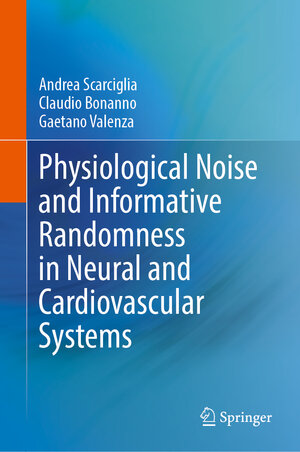
Physiological Noise and Informative Randomness in Neural and Cardiovascular Systems
von Andrea Scarciglia, Claudio Bonanno und Gaetano ValenzaNoise, often viewed as a disturbance in biomedical signal analysis, plays a crucial and informative role in the dynamics of complex physiological systems, particularly in neurocardiovascular and neural networks. Recent developments underscore noise, or stochasticity, as fundamental to physiological processes, from information transfer in the nervous system - across scales from neurons to the brain - to cardiovascular, respiratory, motor, and sensory functions.
This book offers readers a comprehensive perspective on physiological noise, redefining it not as an artifact, as traditionally viewed, but as an inherent component of physiological systems. It explores noise phenomenology within the neuro-cardiovascular system across multiple scales and presents the primary mathematical methods for estimating intrinsic noise.
Building on foundational approaches, the book introduces recent noise estimation techniques and details the validation of these stochastic component estimates using synthetic data and their applications to real physiological systems. The methods ultimately position noise as a promising biomarker for differentiating between various physio-pathologic states.
This book is designed for undergraduate and master’s students, as well as PhD students and researchers in biomedical engineering and physiology. Its broad appeal stems from the subject’s multidisciplinary nature and the structured progression of concepts, which helps readers build a strong foundation for understanding the key methods presented. Readers will be guided through a rigorous, formal exploration of essential tools, making analyses and results accessible. Illustrative figures and informal explanations of core concepts are included to enhance intuitive understanding.



